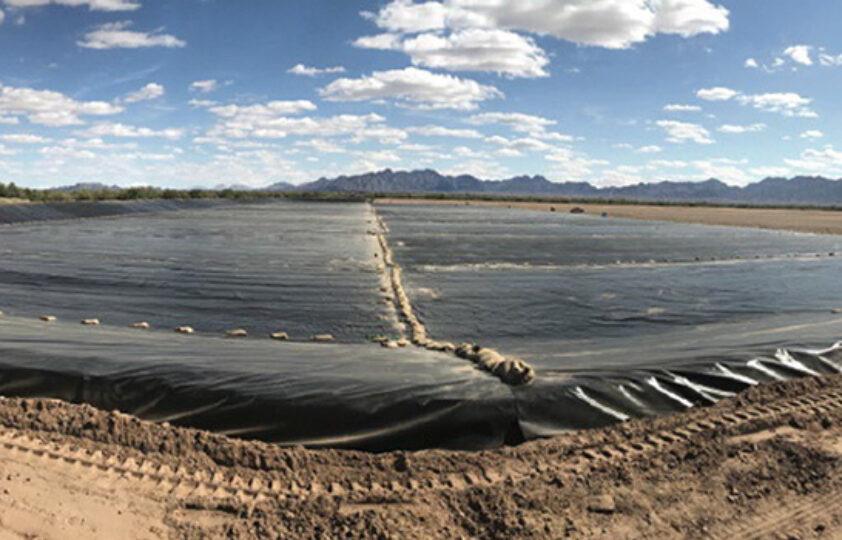
Freshwater supplies are a worldwide issue for many areas in relation to access and availability. Geosynthetics have long been a significant factor in environmental water containment solutions. Solar Power & Water pond systems are designed and marketed to address freshwater shortages, agricultural drainage cleanup and the need for low-cost renewable energy.
The project site was in Wellton, Ariz., in Yuma County, about 30 miles (48 km) east of Yuma, Ariz. The project scope included a salt gradient solar pond containing a flexible geosynthetic liner system, and with the help of a prime mover (engine), was designed to extract power directly from the pond’s hot brine. The objective of pond performance was to distill brine water into fresh potable water and energy. Solar Power & Water’s innovative system provided a renewal water source for water that originated from agricultural wastewater, brackish/saline water (or ocean water) and sunshine. This project and its design remain significant, as a portable technology that may offer a catalyst for the systematic transformation of massive amounts of available brine water into renewable energy and fresh potable water.
The site had many challenges. One was a sandy soil subgrade, a dry, dusty site that required the area to be wet and rolled daily to maintain compaction and stability. Another was the high temperatures at this desert site, with temperatures reaching 115°F (46°C) in June. Crews worked from 10 pm to 8 am schedules to avoid heat on both the field personnel and to keep the welding temperatures manageable. High winds meant the team had to immediately secure each reinforced polypropylene (RPP) panel with sandbags following deployment and installment. And, finally, the containment of the hot brine water in the pond being distilled was another factor in the design discussion to find a suitable flexible liner for the containment.
The flexible Raven Dura-Skrim RPP geomembrane chosen for this project was based on the following factors: high temperature resistance, excellent dimensional stability, and ease of handling and sealing in both factory and field allowing for efficient use of large factory-fabricated panels to increase production rates. A total of 130 prefabricated factory RPP panels measuring 220 x 96 feet (67 x 29 m) and 540 ballast tubes were designed and built at the manufacturer’s quality-controlled location and delivered to the project site in Arizona. Construction installation crews completed the project in an impressive 28 days, well ahead of the 35 days originally projected and budgeted. This saved the client significant days on-site, labor and cost, along with minimizing unnecessary weather risks. Effective communication/planning between Raven and Solar Power & Water additionally attributed to the timely project completion. The project installation was completed, the lake filled to operating capacity, and the project then finished up construction work for the infrastructure. During the project analysis, Raven saw a significant gain with the engineered use of modular construction prefabricated factory panels. The company reduced field seams by more than 50% when compared to competitive field-installed sheet membranes. In the end, the project was designed, fabricated, installed and completed with high-quality performance and an optimal success rate for Solar Power & Water.
This article first appeared on the Raven Engineered Films Case Studies website, https://www.ravenefd.com/solving-containment-challenges/case-studies.
 TEXTILES.ORG
TEXTILES.ORG


